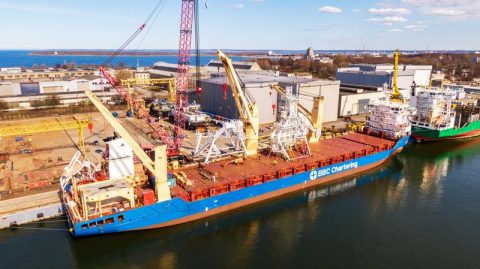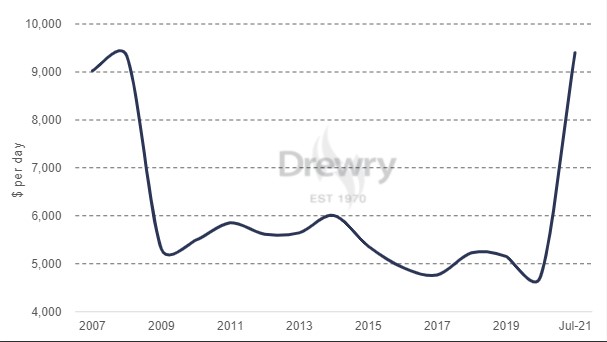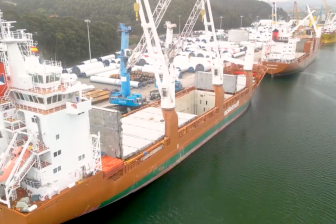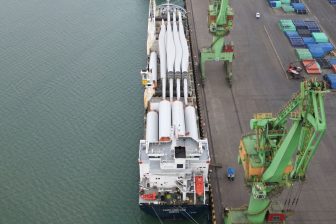
Drewry: MPV charter rates going above 2008 peak
The UK-based shipping consultancy Drewry expects charter hire rates for the multipurpose and heavylift fleet to continue to rise from their current peak for the remainder of the year.
According to Drewry’s Multipurpose Shipping Forecaster, this is due to the continued easing of lockdown restrictions across the globe, combined with the capacity constraints in other sectors.
According to Drewry’s Multipurpose Time Charter Index, average annual one year period rates for July are expected to be some 65 percent higher than July 2020, almost 50 percent higher than July 2019 and surpass their last peak of 2008.

Drewry sees perfect storm for breakbulk and heavylift sectors
Breakbulk and heavylift charter rates have seen historic lows over the last ten years, exacerbated by container carriers moving further and further into this sector. When utilisation is weak in the competing bulk and container sectors, breakbulk cargo is stuffed into containers and project cargo carried by a wider variety of vessels. This increased competition has kept rates weak for much of the past decade, however currently the reverse is true, Drewry notes.
Capacity constraints in the competing sectors due to container equipment shortages, port congestion and the release of pent-up demand post the global pandemic, have combined to provide a perfect storm for the multipurpose fleet.
Drewry expects demand for multipurpose and heavylift tonnage to rise by some 11.5 percent in 2021 compared to 2020, before slowing to a steady 3.5 percent per year to 2025. This strengthening demand has been led by the recovery in global container traffic in 2021 due to a rise of over 7 percent for dry cargo global trade post the pandemic.
China’s strengthening economic activity is driving crude steel production in the region and consequently both manufacturing and bulk demand. Add to this the US fiscal stimulus and improved health conditions that are producing an unprecedented rebound in consumer spending and housing activity in the US.
Forecasts with a caveat
Inevitably there are still some caveats around Drewry’s forecasts. In particular the speed of the global recovery is dependent on both the vaccine rollout and the extent of economic policy supporting growth in any given region. This is prompting increasingly divergent recovery paths, widening the gap between developed and developing countries, compared to pre-pandemic expectations.
For the multipurpose sector, this divergent recovery could have a weakening effect as the need for breakbulk and project cargo tends to be led by renewed construction and investment in the developing countries. However, Drewry’s optimism for this sector is significantly improved, even from just three months ago, and the consultancy believes the current strength in the market will ride out the remainder of the year and beyond.



